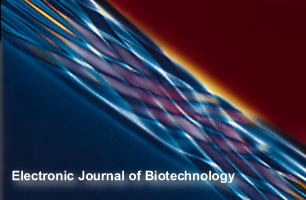Abstract
A total of 92 isolates of the purple non sulphur photosynthetic bacteria (PNSB) were isolated from 23 samples of wastewater obtained from rubber sheet manufacturing processes from various places of southern, Thailand. The isolate DK6 had the best potential for use in wastewater treatment as it can out-compete indigenous strains of PNSB when grown with them under conditions of microaerobic-light conditions. The isolate DK6 was identified as being most closely allied to Rhodopseudomonas blastica. The optimal pH and temperature for cell growth were between 6.5-7.5 and 30ºC, respectively. Optimum growth of DK6 was obtained after supplementing the wastewater from a latex rubber sheet processing plant with 0.50% (NH4)2SO4 and 1 mg/L nicotinic acid under conditions of microaerobic-light (3000 lux). Using these optimum conditions for growth, indigenous microorganisms reduced the initial chemical oxygen demand (COD) of the wastewater from 7,328 to 3371 mg/L a reduction of 54% and the biochemical oxygen demand (BOD) (initial BOD 4967 mg/L) by 70%. Using the same conditions and either a pure culture of DK6 or a mixed culture (DK6 plus indigenous microorganisms) a reduction of 90% of both COD and BOD was achieved. Chemical analysis of the cultures after treatment of the enriched wastewater shows that the protein content of the pure DK6 was 65.2% of the dry weight, and in mixed culture the protein content was 66.7%. Hence, single cell protein (SCP) may be a possible bi- product of the treatment process.
Upon acceptance of an article by the journal, authors will be asked to transfer the copyright to Electronic Journal of Biotechnology, which is committed to maintain the electronic access to the journal and to administer a policy of fair control and ensure the widest possible dissemination of the information. The author can use the article for academic purposes, stating clearly the following: "Published in Electronic Journal of Biotechnology at DOI:10.2225/volXX-issueX-fulltext-XX".
The Copyright Transfer Agreement must be submitted as a signed scanned copy to biotec@ucv.cl. All authors must send a copy of this document.
